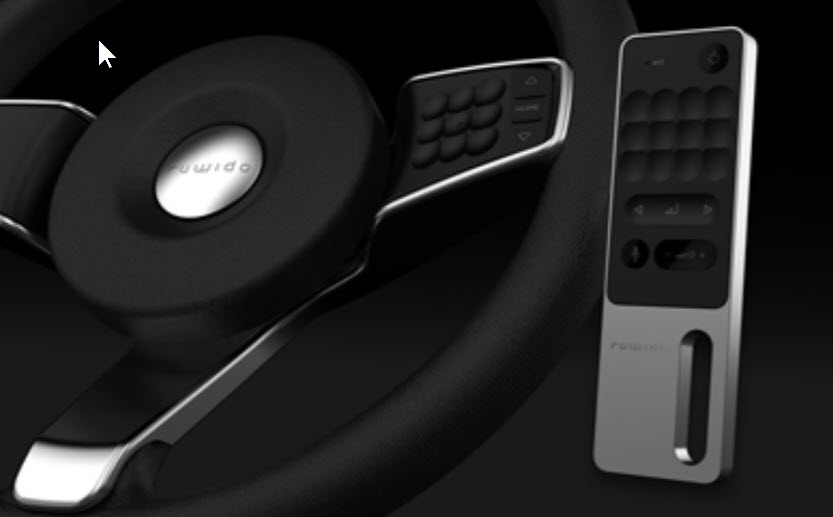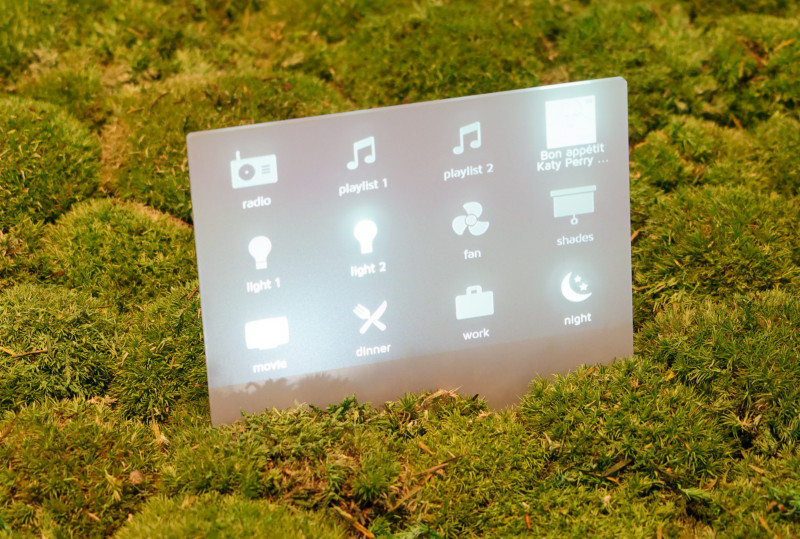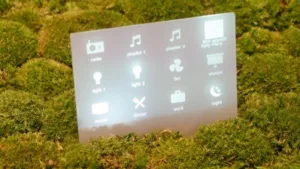Ruwido of Salzburg was at the show in its usual immaculate booth and with the very established team that the company has had for a number of years. We spoke first to Regina Berghaupt who was previously an Invited Professor at the University of Toulouse, but is now a full Professor at the University of Technology in Eindhoven, as well as being the Research Director at Ruwido. One of the great points of the work done by Ruwido is that it is all based on a solid bed of user research – it’s never just a bright idea from the marketing department!
One of the points that Berghaupt made to us in previous years was that although the idea of using touch on a smartphone to control a TV seemed a good idea, it was not likely to be a popular modality for the interaction. That’s because to use this kind of system, you need to look at the smartphone, whereas those wanting to control a TV prefer to look at the TV itself. For this reason, the company developed a remote control based on a grid that the user can feel as the surface has an array of 4 x 3 selectors. There’s an area that is clearly an analogue ‘volume scale’ to go alongside the selectors. Echoing choices to the same shape on the screen makes it very intuitive to select without having to look at the remote.
 Ruwido’s Tictactile remote uses a 4 x 3 grid so that you don’t need to look at the set.
Ruwido’s Tictactile remote uses a 4 x 3 grid so that you don’t need to look at the set.
The company has had some success with the concept and has won red dot awards (best of the best, two years running, a very unusual achievement). The company has also announced deals with Andorra Telecom and Crestron (the TSR-310 and HR-310 remotes – although they don’t use the TicTacTile concept).
Ruwido wants to extend its controls and has been working on home and IoT control – a challenge for brands as the market develops. There is no reason that the firm’s approach cannot be applied, although Berghaupt told us that it has found that users don’t want smart homes, they want convenient homes. By effectively moving all the visuals to the TV set, the remote becomes genuinely universal. By using technology such as compasses (very cheap now they are in smartphones, everywhere) the remote can understand where it is being pointed and so can operate a home UI as an alternative to the TV.

This kind of concept should be attractive to service providers who are increasingly looking to applications other than video to act as revenue generators as traditional PayTV is squeezed by OTT providers including Netflix & Amazon.
After that demo, CEO, Ferdinand Meier took us into the inner area and showed us something that has, so far, been shown only to a handful of select clients. Meier picked up the remote control and it immediately recognised him and personalised the screen. There was no obvious biometric sensor (such as a fingerprint sensor). Meier told us that the technology is not as secure or accurate as biometrics, but is good enough for the purpose. He wouldn’t say how it was done, but it was clever!
Analyst Comment
I’ve spent some time trying to work out how Ruwido is making an id of the user without biometrics. Meier would only say that it used ‘a new sensor’ and some maths! I guess it could use the compass in conjunction with, perhaps, voice recognition if you know the direction that the voice is coming from? Or skin temperature? I welcome suggestions! (BR)

